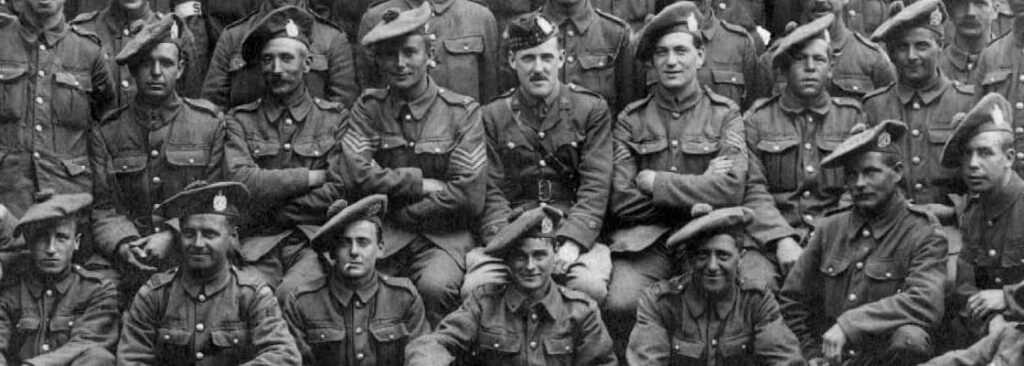
Between the two World Wars the 1st Battalion served in India and Chanak (1922), Malta and Palestine (1936). 2nd KOSB served in Ireland, Egypt, Hong Kong and India, where it was when war broke out in September 1939.
1st battalion KOSB embarked for France in 1939 as part of the 3rd division of the BEF. They crossed the Belgian frontier in May 1940, and like the rest of the force, outgunned by an enemy of overwhelming numerical superiority, they were ordered to withdraw.
Fighting their way to the coast, on the night of 31st May/1st June they were evacuated from the beaches of Dunkirk and reached England.
Also present in France in 1940 were the 4th and 5th (Territorial) Battalions, with the 52nd (Lowland) Division. In a little known campaign, designed to prevent France from falling, they landed as part of a second BEF at St. Malo in Brittany on the 13th June.
The intention had been to establish a bridgehead with the French Army but France capitulated and on t18th June the battalions were taken off from Cherbourg.
Intensive training followed along with the establishment of no less than thirteen Home Guard battalions of the KOSB. The regular battalions were all given defensive roles. 1KOSB patrolled in Sussex, the 4th in Norfolk, 5th in Huntingdon and Norfolk, 6th and 7th in Essex.
By the end of 1941 all KOSB battalions except 1st 2nd and 9th were in Scotland.
From summer 1942 4th and 5th KOSB trained as mountain troops and later as airborne infantry. But it was 7th battalion who trained principally for the airborne role.
With the allied invasion of Europe in 1944, 1st battalion KOSB was there at the forefront, returning to France on D-Day, 6th June, landing at ‘Queen’ Beach. They fought through Normandy and around Caen until the town capitulated, and then advanced north through Belgium and Holland to the Rhine and Bremen.
The 4th and 5th battalions found themselves in the Low Countries in the autumn of 1944, taking part on the strongly contested assault landings on Walcheren Island, at the mouth of the Scheldt. They then fought through into Germany taking a notable part in operation Blackcock and also taking part in the capture of Bremen.
The 6th battalion landed on the Normandy beaches on the 15th June 1944, and took part in the battles around Caen and the River Odon. Fighting through France, Belgium and Holland, and crossing the Siegfried Line, they advanced across the Rhine into Germany.
7th KOSB became glider-borne troops with the 1st Airborne Division, and in September 1944 they were flown into the landing zone west of the village of Wolfheze, near Arnhem. At Johannahoeve Farm and later at The White House, the battalion along with other airborne troops found itself surrounded by an enemy force superior in numbers and equipped with tanks. They fought gallantly but never really had a chance. When the order to retreat was given on 25th September, what had gone in as a 740 strong Battalion had been reduced to 4 Officers and 72 men. The KOSB’s losses at Arnhem, 90% killed and taken prisoner, were the third highest of any battalion engaged.
Meanwhile, 2nd KOSB had been in the East since 1923. Until November 1942 they were at Razmak when they left for Peshawar. After tough training they sailed with the 7th (Indian) Division to Burma in September 1943.
The 2nd battalion crossed into the Arakan, and took part in the critical actions at Ngakydauk Pass and in the ‘Admin Box’, where 2 COs were killed. Later they were flown to the central front at Imphal. In early 1945 they marched towards the Irrawaddy and took part in the assault that turned the Irrawaddy line. The Battalion’s last battle took place at Prome in May 1945, by which time Rangoon had fallen and the Japanese Army’s defeat in Burma was assured.